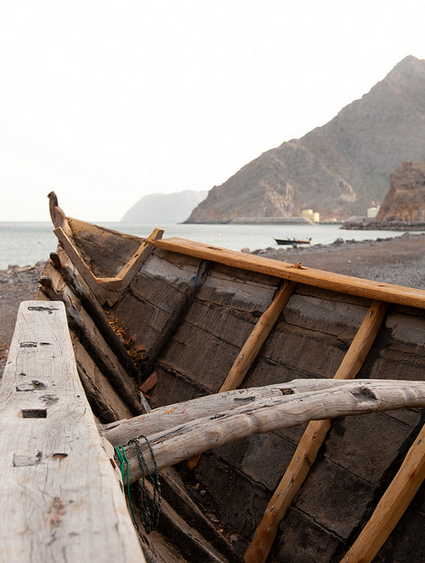Have you heard about Dhofar yet? Would you love to explore different natural surroundings?
Hidden beaches, lapped by the Arabian Sea, abound throughout the Governorate of Dhofar. The city of Salalah is blessed with kilometre after kilometre of soft white sand, the main beaches including those at Dahariz, Al Baleed and Haffa, near Al Husn Palace.
West of the city the mountains give way to the beaches of Mugsayl and beyond, creating dramatic backdrops. To the east of Salalah, unspoilt beaches can be discovered all the way to Taqah, interrupted only by a few creeks. Beyond Mirbat, the nature of the coastline changes to one of small coves: some with Dhofar's famous white sand, others of multi hued granite pebbles worn smooth by the power of Oman's Arabian Sea.
In this article we will show you 7 Fascinating Nature Attractions In Dhofar:
Water Spring
The souther side of the Dhofar Mountains is blessed with many springs. Some are sporadic, others like the flow at Ain Razat, are continuous. Set just north of Saadah, the spring at Ain Sahnawt is located at the end of a beautiful wooded valley. The road which winds up to the plateau is bordered by dense woodland which remains in leaf well after the Khareef. Set deep within two valleys between Salalah and Taqah are the twin springs of Ain Tabruk and Ain Athum. Hidden within well wooded hillsides, these seasonal springs are at either end of a very attractive valley and during the Khareef the open grasslands in the valley's centre are ideal for picnics.
Wadi Darbat
The most unexpected site in Dhofar is Wadi Darbat. The wadi is secreted in the mountains overlooking the site of Khor Rori, just after Taqah on the coast. At its southern end a natural Tufa dam described by mid 19th century travellers as "one of the most stupendous natural phenomena we have ever seen" allows views over wide areas of the coast. Within the wadi are a ribbon of small lakes overlooked by undulating hillsides. During the Khareef the water is replenished and some may remain throughout the year. The grasslands formed during the Khareef offer grazing for camels, cows, goats and donkeys, as well as a spacious picnic area for visitors.
 |
| Nameer (via Flickr) |
Ash Shuwaymiyyah
To the far east of Salalah, beyond the Dhofar Mountains, lies the town of Ash Shuwaymiyyah. Set on the coast at the end of a kilometre long beach where beautiful Wadi Ash Shuwaymiyyah meets the sea, the town is a centre for fishing and lobster harvesting. In a few homes skilled ladies create baskets woven from palm and leather, a link between the necessities of the past and souvenirs of today.
Birds in Dhofar
Though usually associated with Afro-tropic region The Governorate of Dhofar's avifauna receives migrants from the Palearctic and an increasing number from the Indomalaya region. To the north of Dhofar Mountains isolated areas of vegetation provide critical places of recuperation for migrants like Hume's Leaf Warbler, while the more fertile mountains and valleys host not only migrants such as White Stork but permanent residents including the Rüppell's Weaver and Grey-headed Kingfisher. The coast line has innumerable sea-birds and waders, including Socotra Cormorant and Greater Flamingo.
Land mammals in Dhofar
Throughout the Governorate of Dhofar land mammals inhabit the mountains and coastal plains, where they enjoy protection from hunting under Oman's law. The most iconic is the Arabian Leopard, one of the smallest Leopard species and these mountains are critical to its survival. The Arabian Gazelle can most readily be seen in the valleys either side of the main mountain ranges. In these valleys Rock Hyrax are also found, while in remoter areas Striped Hyaena, Nubian Ibex and Arabian Wolf live.
 |
| Land Rover Our Planet via Flickr |
Mountains in Dhofar
The Dhofar Mountains are by far the major natural feature in the Governorate of Dhofar. They extend from the farthest west of the region near Dalkut to Ash Shuwaymiyyah in the east. Each of the three main ranges has a unique appearance , which helps create added interest for those visitors who wish to explore them. The thousand meter high cliffs of Jabal Al Qamar ( The Moon Mountains ), which face the Arabian Sea in the west, catch the moisture from clouds formed during the Khareef ( Monsoon ) season from June to September, creating the "cloud forest", which develops a green blanket of vegetation on those slopes which drop towards the sea.
Mugsayl Beach
Probably the most famous attraction of The Governorate of Dhofar are the "blow holes" at Mugsayl to the west of Salalah. Small holes in the rock just above the sea allow a forceful fountain of sea water to explode into the air during times when the sea slightly rough. The sound as the air and sea water rush upwards is almost as if an angry sea monster would appear rather than a dramatic cascade of water. Overlooking the blow holes, Al Marnif Cave provides a sheltered place to relax and enjoy the views and sea breeze. Mugsayl Beach's soft white sand stretches for six uninterrupted kilometres and its small picturesque shelters allow families to picnic and relax overlooking the sea. The Mugsayl area also has some of the most accessible frankincense trees of the region and when they flower honeybees produce frankincense honey.
 |
| Chris Helmkamp (via Flcikr) |
One can imagine the magnificence of this province when most parts of the Arabian Peninsula witness a rise in temperatures of up to 45 degrees Celsius in summer. But, in Salalah, the capital of Dhofar that lies 1,040 kilometres away from Muscat, temperatures never rise above 27 degrees Celsius. There are daily flights between Muscat and Salalah, as well as other Arab Gulf states.
Do you really know Dhofar as well as you think?
Please, take a moment to leave your comment below!



.jpg)







.png)

.jpg)








.png)





.png)
.png)







.png)
.jpg)
.jpg)

.web.jpg)



.jpg)
.jpg)
